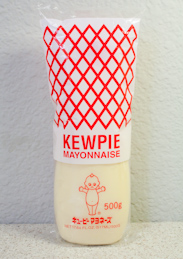 |
| Our Chinese New Year tree: a melting pot original |
By our rights we get noodles on Chinese New Year, King Cake on Fat Tuesday, Chirashizushi on Japanese Girls' Day, and wine and cheese whenever we feel like it.
 |
| Our beautiful hostess in her "working" kimono. Thank you, Char! |
Last weekend we went to a belated New Year's party given by a Japanese host. Japan celebrates the New Year on January 1. It felt somewhat ironic to celebrate it just days before Chinese New Year. However, a party is a party. And a Japanese New Year Party at Chinese New Year makes it even more fun.
For all the years we lived in Japan, we never tried Osechi Ryori, traditional Japanese New Year food. These are dishes families only eat at the New Year, kind of like Thanksgiving for Americans. They are prepared days ahead because it's considered bad luck to cook on New Year's Day. (I love traditions that allow people to relax on the holiday). Norecipes.com has some beautiful pictures and explanations of different Osechi Ryori fare. JustHungry also has a more personal explanation of New Year's food.
 |
| Osechi Ryori |
On the menu (center in the picture): Kuromame, black beans simmered in soy sauce and sugar. Our hostess added gold flakes which drew my kids to the beans like magpies. Datemaki, are the yellow, ridged foods tucked in among the bowls. They taste like egg sushi, sweet and savory, and ours had shrimp in them. Really yummy. One bowl held sugared beans (sweet and dry at the same time). One bowl holds tiny roasted fish. Another holds a shredded daikon and carrot vinegar salad. The bowl with the dark brown food is a simmered salmon dish.
 |
| Sushi dish |
I secretly unbuttoned my pants and accepted the first round of cold sake.
 |
| Gyoza, gone before I could take a picture |
 |
| Cooking nabe tableside |
At that point, I gave in to the discomfort of the over-sated. And tried the hot sake.
Nabe is a broth-based "hot pot." Generally you find cabbage, green onion, tofu, pork, and mushrooms in it, but you can also make it with beef (sukiyaki style), chicken, and other vegetables. Our nabe was made with a soy, mirin, and dashi (fish) broth with cabbage, green onion, giant slices of pork, and enoki mushrooms. Very healthy, very filling.
But we weren't done.
 |
| Ramen noodles added to the nabe--this is not Cup O'Noodle people! |
After the pork and vegetables were gone, ramen noodles were added to the pot (our six year old left an engrossing movie to run to the table and steal my noodle bowl). By that time, high grade tequila and whiskey had arrived at the table. Hot sake still flowed. Bottles of water appeared. Ramen disappeared like magic.
Finally the table was cleared except for final snacks: individual packages of flavored peanuts, dried squid and senbe rice crackers. The kids devoured candy and gummies. Insatiable, they attacked the dried snacks.
We had eaten for four hours without stopping. Oh my goodness, it was incredible.
No recipe today. I'm too exhausted from eating.
Bring on your feast days!
























